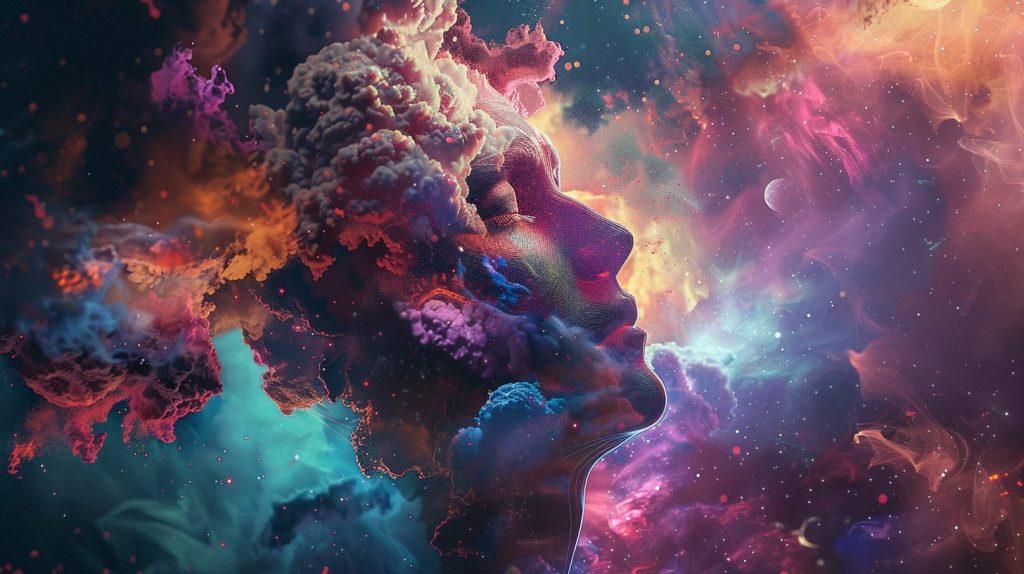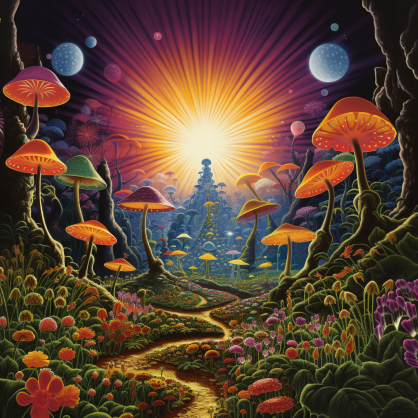
 How Psychedelic Rock Explores Themes of Consciousness and Reality
How Psychedelic Rock Explores Themes of Consciousness and Reality
Leave a comment
Psychedelic rock, a genre that emerged in the 1960s, is characterized by its experimental sound, innovative use of studio effects, and its deep connection with the counterculture movement. This genre is not merely a style of music but a profound exploration of consciousness and reality. As artists sought to break free from traditional musical and societal constraints, they ventured into the realms of the mind and the universe. This article delves into how psychedelic rock examines and portrays themes of consciousness and reality, reflecting on its historical roots, key figures, and lasting impact.
Historical Context
Origins of Psychedelic Rock
Psychedelic rock’s inception is intricately linked with the counterculture revolution of the 1960s, a period marked by a quest for new forms of expression and understanding. The genre emerged from a confluence of various musical influences, including blues, jazz, and folk, combined with the experimental spirit of the era. Bands and artists were influenced by the growing popularity of psychedelic drugs like LSD, which were believed to expand consciousness and alter perceptions of reality.
The genre’s hallmark is its use of unconventional musical structures and effects. The fusion of Eastern musical influences, such as Indian raga, with Western rock instrumentation, created a unique sonic landscape. The experimentation with sound was not just a reflection of the times but also a deliberate attempt to explore new dimensions of human experience.
Influential Bands and Artists
Several pioneering artists and bands were instrumental in shaping psychedelic rock. The Beatles, with their album Sgt. Pepper’s Lonely Hearts Club Band, are often credited with popularizing the genre. Their use of studio effects and experimental techniques set a new standard in music production.
Pink Floyd, known for their concept albums and immersive live shows, pushed the boundaries of musical expression. Albums like The Piper at the Gates of Dawn and The Dark Side of the Moon are considered masterpieces that delve deeply into themes of consciousness and reality.
The Grateful Dead and Jefferson Airplane also played crucial roles in the development of psychedelic rock. The Grateful Dead’s improvisational style and extended jams created a live music experience that was as much about exploring consciousness as it was about entertainment. Jefferson Airplane’s Surrealistic Pillow became a touchstone of the San Francisco psychedelic scene.
Exploration of Consciousness in Psychedelic Rock
The Role of Psychedelic Drugs
Psychedelic drugs, such as LSD, psilocybin, and mescaline, were central to the psychedelic rock movement. These substances were believed to induce altered states of consciousness, providing profound experiences that challenged conventional perceptions of reality. The use of these drugs among musicians led to a new approach to songwriting and performance.
LSD, in particular, was known for its capacity to alter sensory perception and cognitive processes. This influenced artists to experiment with new sounds and forms, creating music that mirrored the altered states induced by the drug. The connection between psychedelic experiences and musical creativity is evident in the complex, layered compositions of bands like Pink Floyd and The Beatles.
Lyrics and Themes Related to Consciousness
Psychedelic rock lyrics often explore themes of self-awareness, existentialism, and spiritual experiences. Songs frequently reflect a quest for deeper understanding and a desire to transcend ordinary perception. Lyrics might depict journeys through mystical realms or confrontations with the self.
For example, The Beatles’ Lucy in the Sky with Diamonds evokes imagery of a fantastical journey, drawing on the idea of expanding one’s consciousness. Similarly, Pink Floyd’s Comfortably Numb addresses the theme of disconnection from reality and the numbing effects of modern life.
Songs like The Doors’ People Are Strange and Jefferson Airplane’s White Rabbit delve into the nature of reality and personal identity, reflecting the psychedelic quest to explore and redefine the self.
Musical Techniques to Evoke Consciousness
Psychedelic rock employs a variety of musical techniques to evoke and enhance the experience of altered consciousness. These include:
| Unconventional Song Structures | Psychedelic rock often features non-traditional song forms, including extended jams and complex arrangements. This departure from standard verse-chorus structures creates a fluid, immersive listening experience. |
| Effects and Production Techniques | The use of effects such as reverb, delay, and phasing is prevalent. These effects alter the sound of instruments and vocals, creating an ethereal, otherworldly quality. Techniques like tape manipulation and reverse recording further contribute to the genre’s distinctive sound. |
| Improvisation | Many psychedelic rock bands, notably The Grateful Dead, incorporate improvisational elements into their performances. This spontaneity mirrors the unpredictable nature of altered states of consciousness and contributes to a sense of exploration and discovery. |
Exploration of Reality in Psychedelic Rock
Concept of Reality in Psychedelic Music
Psychedelic rock challenges conventional perceptions of reality by exploring alternate dimensions and states of existence. The genre often presents a fluid, dynamic view of reality, reflecting the belief that our everyday experience is only a limited aspect of a broader, more complex universe.
Albums like The Dark Side of the Moon by Pink Floyd use thematic and conceptual elements to explore the nature of human experience and perception. The album’s seamless flow and thematic coherence create a narrative that examines the boundaries between reality and illusion.
Visual and Artistic Elements
The visual aspects of psychedelic rock are as significant as the music itself. Album artwork often features vibrant, surreal imagery that complements the music’s exploration of alternate realities. The use of psychedelic visuals extends to concert experiences, with light shows and projections creating immersive environments that enhance the sensory experience.
Artists such as Peter Max and the design team of the Grateful Dead’s album covers played a crucial role in visualizing the psychedelic experience. The art not only reflects the themes of the music but also contributes to the overall experience of exploring new realms of perception.
Notable Songs and Albums that Explore Reality
Several key works in psychedelic rock focus explicitly on themes of reality. Pink Floyd’s The Wall and Wish You Were Here explore personal and societal realities, addressing themes of isolation, alienation, and the human condition.
The Doors’ The End and Riders on the Storm reflect on existential themes and the nature of reality through their dark, atmospheric soundscapes. Jefferson Airplane’s After Bathing at Baxter’s offers a surreal journey through various states of consciousness and reality.
The Impact of Psychedelic Rock on Broader Culture
Influence on Other Music Genres
Psychedelic rock has significantly influenced numerous other genres. The experimental approach to sound and form has inspired genres such as progressive rock, electronic music, and alternative rock. Bands like Radiohead and Tame Impala draw on psychedelic influences to create music that pushes boundaries and explores new dimensions of sound.
The genre’s emphasis on altered states of consciousness and unconventional experiences also paved the way for the development of electronic music, which continues to explore similar themes through the use of technology and sound manipulation.
Cultural and Social Impact
Psychedelic rock was not only a musical movement but also a cultural phenomenon. It was closely tied to the counterculture movement of the 1960s, which challenged traditional social norms and sought new ways of thinking and living. The music’s exploration of consciousness and reality resonated with the broader cultural quest for personal and societal transformation.
The genre’s impact extended to social and political realms, influencing movements advocating for peace, freedom, and self-expression. The psychedelic experience became a metaphor for breaking free from conventional limitations and exploring new possibilities.
Legacy and Modern Revival
The legacy of psychedelic rock endures in contemporary music and culture. The genre’s emphasis on exploration and innovation continues to inspire new generations of artists and listeners. Modern bands like MGMT and Flaming Lips incorporate psychedelic elements into their music, reflecting the ongoing fascination with consciousness and reality.
The revival of psychedelic aesthetics in modern culture, including fashion and art, demonstrates the lasting appeal of the genre. The renewed interest in psychedelic experiences and their potential benefits for mental health and well-being further underscores the genre’s enduring relevance.
The Lasting Impact of Psychedelic Rock on Consciousness and Reality

Psychedelic rock remains a profound exploration of consciousness and reality, reflecting a deep-seated desire to understand and transcend the ordinary. From its origins in the 1960s counterculture to its ongoing influence on contemporary music and culture, the genre has consistently sought to push the boundaries of human experience.
The examination of consciousness and reality in psychedelic rock reveals a rich tapestry of artistic innovation and philosophical inquiry. As the genre continues to evolve and inspire, it offers a unique lens through which we can explore the complexities of our own perceptions and experiences.
Categorised in: Psychedelic



